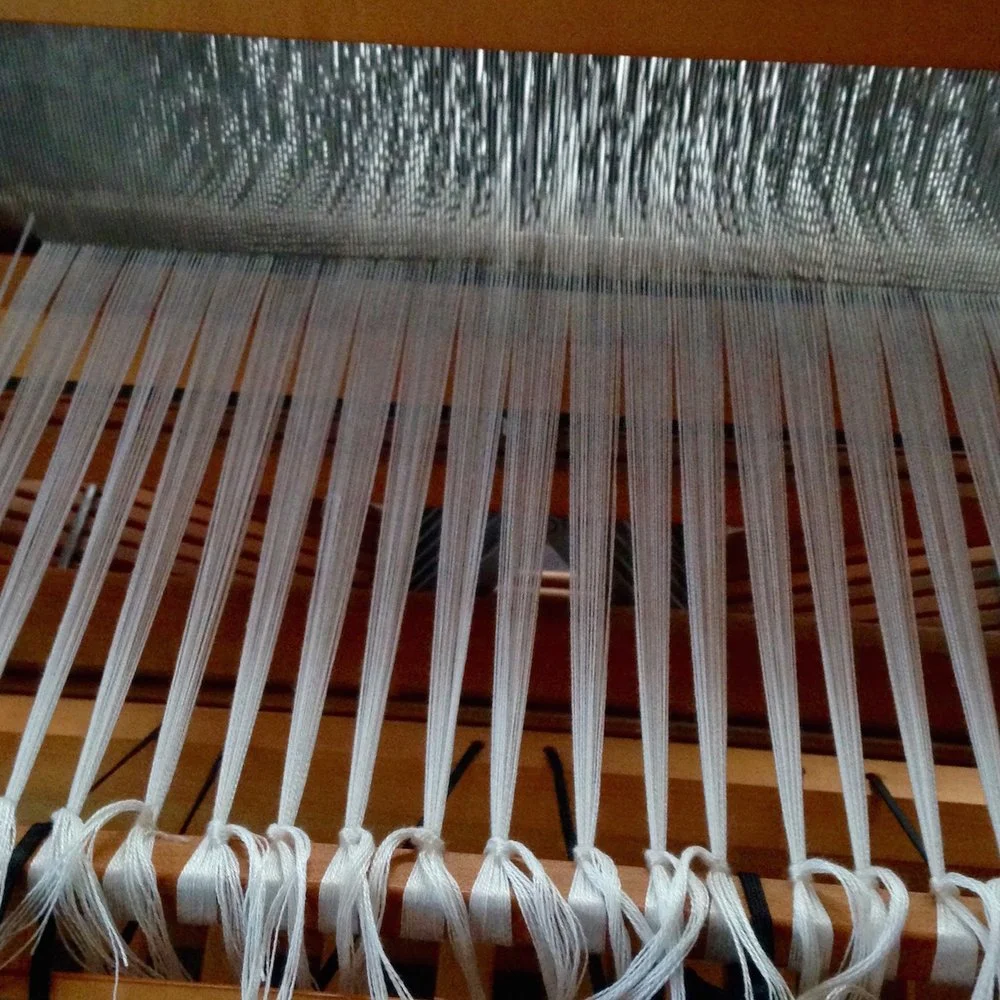Nature and Nurture
This is one of my favorite things in the world - a freshly dressed loom, ready for weaving to start.
This is a world full of possibilities - innumerable possibilities (though not, as my mathematician husband reminds me, not ‘nearly infinite’). A tabula rasa.
But not quite. Because although what you see appears to be identical white threads, there are differences lurking behind the reed. Very much like every strand of DNA is made up of just 4 amino acids, and through their combinations, all life on earth is defined, each thread on the loom goes through a heddle on one of eight shafts. The ordering of those threads defines part of the pattern of the weaving.
This, along with the physical properties of the thread, and the closeness at which they are sett, make up the “nature” of the cloth.
Then, as I weave, I decide which shafts to raise when I treadle (actually, I’ve already decided the order in which they will be raised - and hope not to make any mistakes!), and which colors to weave, and which threads to use. This is the “nurture” of the cloth.
In weaving, as in life, choices are made moment by moment. At any given point, I will have choices to make as I weave - which color to use, which treadle to press. In the course of this weaving, about 168,000 choices total. The sum of which will make up the totality of this cloth.
The DNA of the cloth limits what it can be. The warp is too narrow to make a shawl, to delicate to make a rug. The threading cannot make lace or a herringbone twill.
But although the DNA limits what the cloth could be, it doesn’t define what it will be. This warp would make nice towels or napkins, or a table runner, or even fabric for a blouse. I don’t expect it will be any of those things, but the possibility is there.

